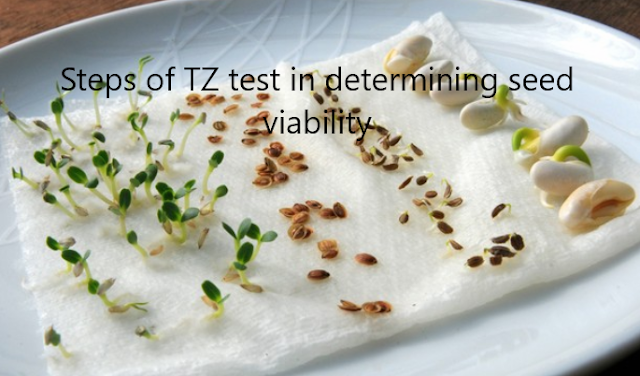 |
| Steps of Tetrazolium test in determining seed viability. |
Tetrazolium test for seed viability
Tetrazolium test:
Tetrazolium test is done to test the viability of seed. The viability test is done to separate the proportion of living and dead seeds present in the seed sample. The seed are treated with 2, 3, 5 – Triphenyl Tetrazolium chloride salt solution of 0.25 – 0.5% that stains the living tissue of the seed on contact and create red color.
Procedure:
1. Soaking of seed for a few hour to absorption of water which soften the embryo, endosperm and activated as enzyme system.
2. Cutting the seed with a sharp knife longitudinally through embryo to facilitate the better contact with tetrazolium solution. The splited seed put into tetrazolium salt solution for 2 – 6 hours depending upon seeds in darkness or defuse light at 70 – 90 °F for staining the embryo.
Staining occur due to oxidation reduction reaction and Tetrazolium solution act as indicator when the living tissue liberates hydrogen during respiration. Then hydrogen react with Tetrazolium solution and forms Formazen insoluble red (purple/red) compound that indicate the presence of life.
3. Working of seed repeatedly with distilled water and observe under simple microscope or high power magnifying glass. The bright red color of embryo indicates the vigorous – living seed. The degree of redness shows the degree of vigor of seed. Faint color indicate less vigor and very faint color indicates very feeble like which is not enough to produce seedling and is not counted as living seed.
If the embryo of a seed is not staining but develop red color on the other part then it will be treated as dead seed.
Useful Agricultural Websites